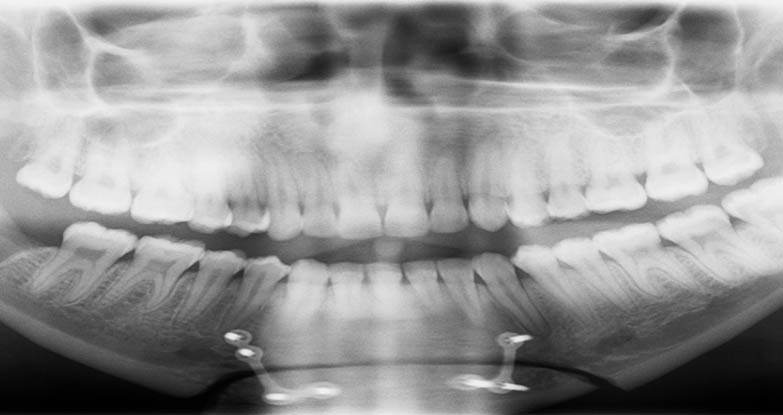Genioplasty

Facial Contours - Chin
Facial contours are among your most noticeable features. Some individuals may be unhappy with how they look as a result of congenital defects or injury to the face, while others are simply dissatisfied with their appearance. Chin surgery can achieve a proportional size or balanced shape to the face.
The problem
The profile of your chin needs corrections the bones of your face are out of balance with each other. Surgery to change the position of a chin is called a genioplasty. The surgery takes place under a general anaesthetic and can be performed in isolation or as part of other corrective surgery. The chin can be moved in any direction for example a sliding genioplasty to correct a centre line problem or advancement genioplasty. There is often a combination of movements required to get the desired results.
What does the operation involve?
The operation is also done from the inside of the mouth so there are no visible scars on the face. An incision is made through the gum on the inside of the lower lip to access the bone of the chin. The chin is then cut with a small saw allow it to be broken in a controlled fashion. It is then moved into its position and held in place with small metal plates and screws. The gum inside the mouth is stitched back into place with dissolvable stitches that can take a couple of weeks to dissolve.
What can I expect after the operation?
It is not particularly painful but likely to be sore and regular painkillers will be prescribed. The discomfort is usually worse for the first few days and disappears completely after a couple of weeks. You will be sent home with a course of antibiotics. Immediately after the chin will feel swollen and tight. Swelling and bruising is normally worse on the second or third day after the operation. The swelling can be reduced with icepacks and sleeping with a couple of pillows to elevate the head. Most of the swelling disappears after a fortnight.
Can I eat normally after the operation?
If you are having genioplasty carried out on its own you should have no issues eating a soft diet and then gradually building up to a normal food over a few days.
How long will I be in hospital?
Most patients are in hospital overnight. The position of your chi will be checked with X-rays before you are allowed home.
Do I need to take time off work?
Yes, one week. In addition as you are having general anaesthetic you will not be able to drive or operate machinery for 48 hours post surgery.
What are the possible problems?
Complications are rare but the main ones to discuss are.
- Bleeding - Some oozing is expected but significant bleeding is rare and is normally treated with firm pressure for at least 10 minutes.
- Numbness - your bottom lip will be numb and tingling after the operation., similar after going to the dentist. This numbness may take a few weeks to disappear and in a minority of patient there may be a small patch which is numb longterm.
- Infection - the small plates and screws that hold your chin in its new position are usually left in permanently. Occasionally they can become infected and need to be removed but this is not normally apparent until a few months post surgery.
Will I need further appointments?
A review appointment will be arranged before you leave hospital.
Facial Implants - Chin
Facial contours are among your most noticeable features. Some individuals may be unhappy with how they look as a result of congenital defects or injury to the face, while others are simply dissatisfied with their appearance. Chin implants can achieve a proportional size or balanced shape to the face.
Chin Implants
Chin implants are made of soft, solid silicone or porous substances that are designed to integrate with surrounding tissues. These implants are frequently chosen to enhance areas of the face forthe following reasons: • areas of the face are asymmetrical • an area of the face is not well developed • an area of the face is malformed due to a health condition • to achieve better facial proportion for nose surgery patients Chin implants improve or accentuate the appearance by providing balance or enhancing your natural contours.
Chin Implant Incision and Pocket Formation
The procedure is usually performed through a small incision on the inside of the mouth or along the underside of the chin. You should discuss the benefits of each type of incision with your physician. This animation demonstrates the incision beneath the chin, which is also known as a submental incision. To begin the procedure, your physician will make an incision along a pre-marked line. Then, with the aid of an electrocautery device or other surgical instruments, your physician carefully creates a pocket below the muscle layer, just above your jawbone.
Chin Implant Placement and Closure
Chin implants are pliable, which allows them to be inserted through a small opening. Your physician will insert and carefully position a sterile implant, ensuring a tension-free fit inside the pocket. With the implant in place, your physician will verify that it looks natural and balanced, making any necessary adjustments. Once satisfied, your physician will close the pocket and skin incision with sutures. Small bandages in combination with a compression bandage may be applied to provide comfort and support.
Chin Implant Recovery
As with any surgical procedure, you will likely experience some pain, swelling, and bruising after surgery, which will decrease over the course of several days. If the incision was made inside your mouth, the sutures will most likely dissolve. If non-dissolving sutures were used for an incision beneath your chin, they will usually be removed within seven to ten days. While you may feel well enough to return to work and normal activities in approximately a week, you should avoid any strenuous physical activity for approximately three to four weeks.
Chin implants Results
You will notice results from facial implant procedures immediately. Swelling after the procedure may cause the skin to appear shiny at first, but it will subside within a couple of weeks, and the skin will regain its normal appearance. As the swelling subsides, the area that received the implant will soften and will look even more natural. Scars are hidden in creases or in areas where they are difficult to detect, and they will fade considerably over time, making them almost imperceptible. With chin implants, you can achieve the shape, definition, and contours that you have always wanted.
Phone
07866807608 or 07956229992
The Harley Street Clinic
35 Weymouth Street
London
W1G 8BJ
London W1G 9QJ,
Clinics Hours :
Alternate Wednesdays 9am-1pm
Remote clinics : Monday - Thursday 6PM - 8pm
London Independent Hospital
1 beaumont square, Stepney, London, E1 4NL
Clinics Hours :
Alternate Fridays 9am - 2pm
Remote clinics : Monday - Wednesday 6PM - 8pm

